Discover 11 hidden attractions, cool sights, and unusual things to do in Soria (Spain). Don't miss out on these must-see attractions: Palace of los Condes de Gómara, Church of Saint Dominic, and Co-Cathedral of San Pedro. Also, be sure to include Monasterio de San Juan de Duero in your itinerary.
Below, you can find the list of the most amazing places you should visit in Soria (Castile and León).
Table of Contents
Palace of los Condes de Gómara
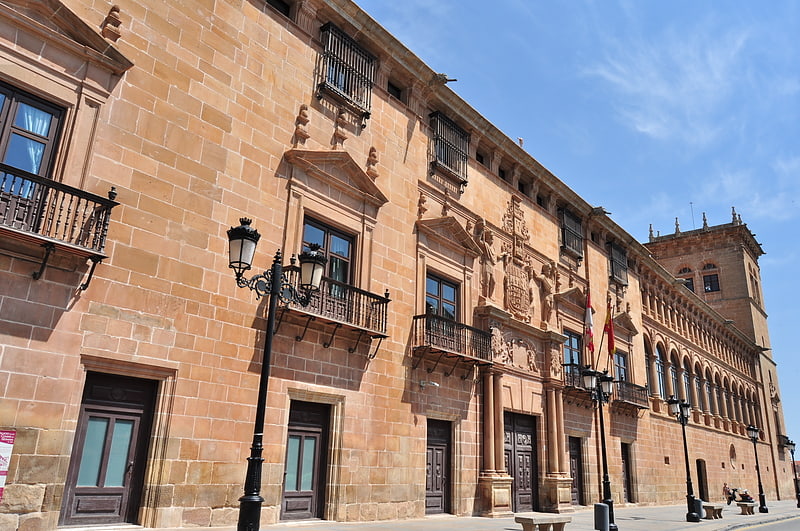
Also known as: Palacio de los Condes de Gómara de Soria
Palace in Soria, Spain. The Palace of the Counts of Gómara is a 16th-century palace located in Soria, Spain.
It is the most representative building of Renaissance civil architecture of the city of Soria.[1]
Address: Calle Aguirre 3, 42002 Soria
Church of Saint Dominic
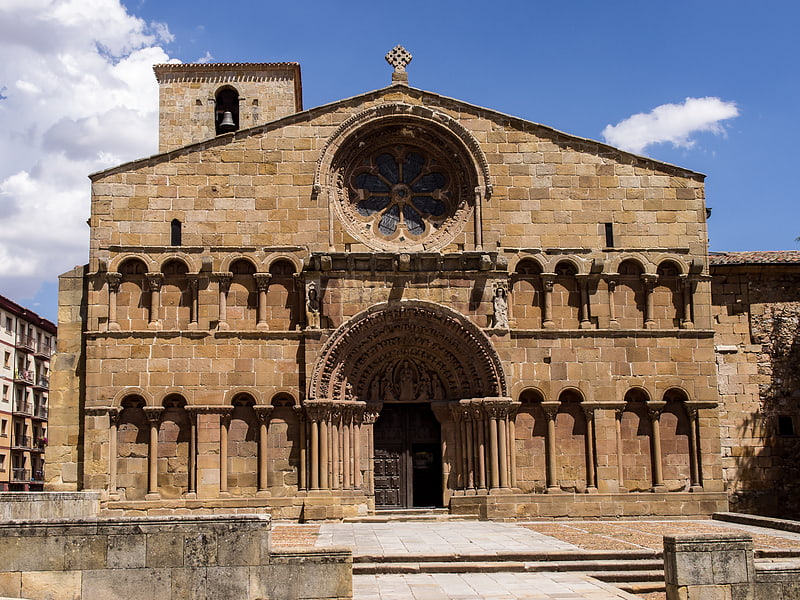
Also known as: Iglesia de Santo Domingo
Catholic church in Soria, Spain. Santo Domingo de Soria is a Romanesque-style, Roman Catholic church in Soria, Castile and León, Spain.[2]
Address: Plaza Condes de Lérida, 2, 42002 Soria
Co-Cathedral of San Pedro
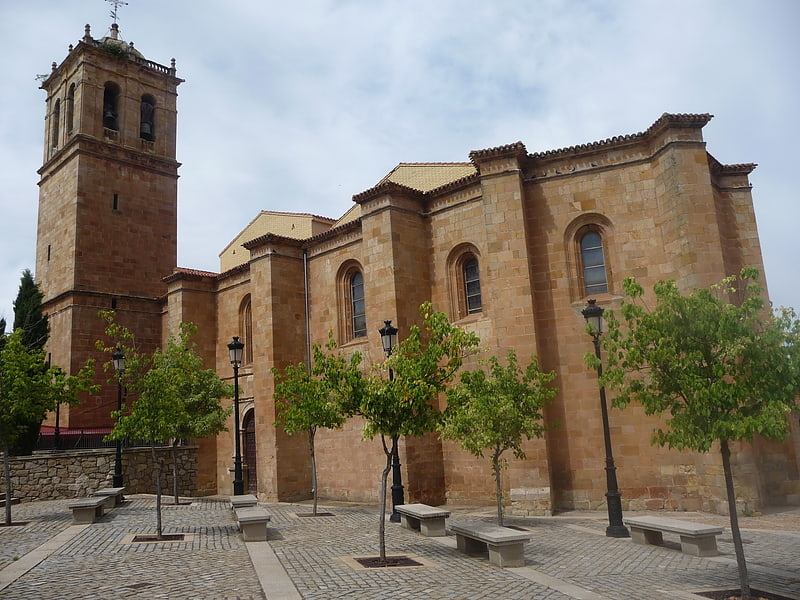
Also known as: Concatedral de San Pedro de Soria
Cathedral in Soria, Spain. The Co-cathedral of San Pedro is a medieval building in Soria, Spain. It is in the Roman Catholic Diocese of Osma-Soria.[3]
Address: Calle Obispo Agustín, s/n, 42004 Soria
Monasterio de San Juan de Duero
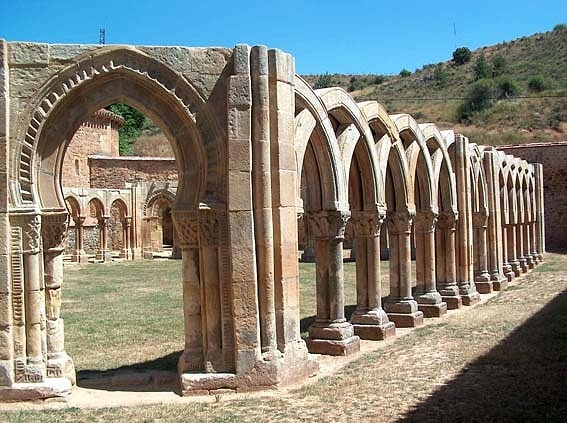
Remains of a 12th-century monastery. The Monastery of San Juan de Duero is a ruined, medieval monastery located in Soria, Spain. It belonged to the Knights Hospitaller.
The building has been protected since 1882 and is a Bien de Interés Cultural.[4]
Address: Carretera Ágreda, 42005 Soria
San Juan de Rabanera

Catholic church in Soria, Spain. The San Juan de Rabanera is a Romanesque-style, Roman Catholic church located in Soria, Spain. It was declared Bien de Interés Cultural in 1929.
Construction began in the 12th century, but the church has been refurbished since, and had the addition of chapels. The highly sculpted main portal derives from the razed church of San Nicolás, moved here in 1908. The apse has flat striated pillars, one of which forms the axis of symmetry, separating two windows with semi-circular arches as opposed to the most common single one.
The interior has gothic elements, but the rounded apse has Romanesque window moldings.[5]
Address: Calle Caballeros, 20, 42002 Soria
Soria Plaza Mayor
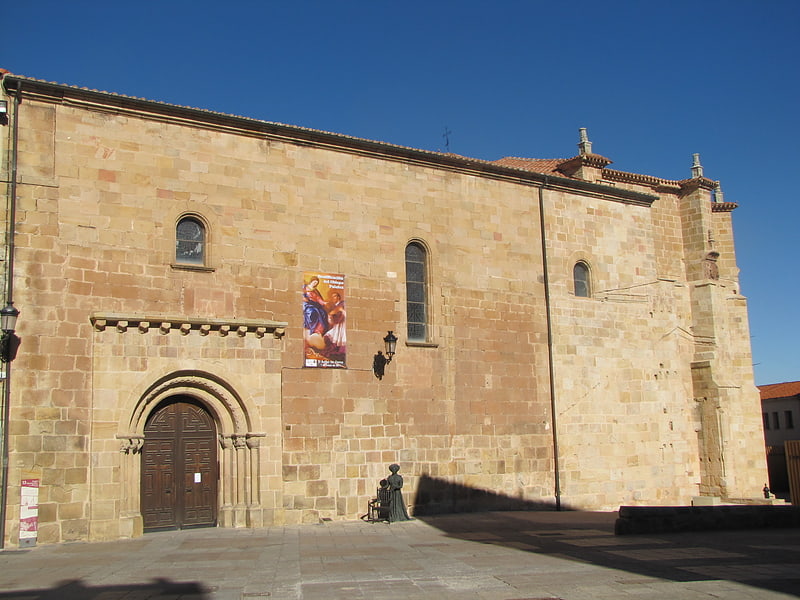
The Church of Nuestra Señora de la Mayor is a Roman Catholic church in Soria, Castile and León, Spain.
It was built in the 16th century on the remains of the Romanesque church of Saint Giles, dating from the 12th or the 13th century. The low, square-shaped tower was part of the original building.[6]
Museo Numantino
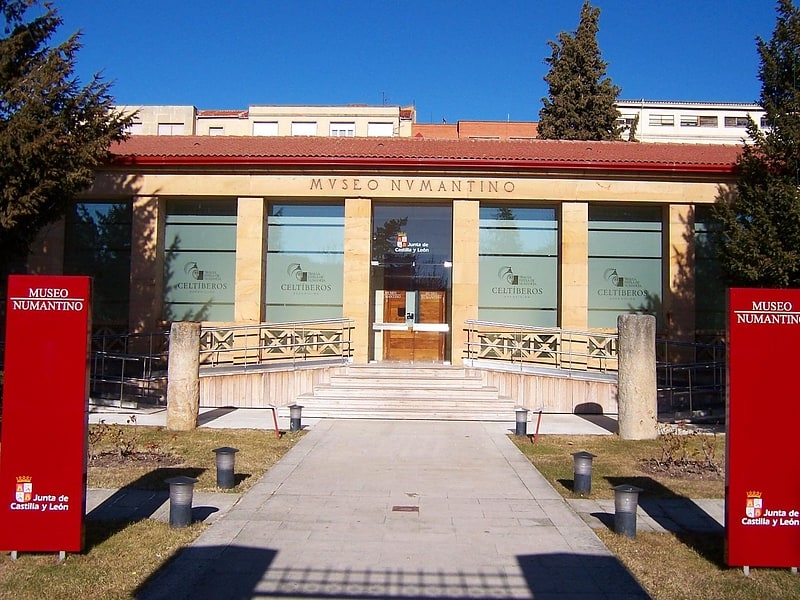
Museum in Soria, Spain. The Numantine Museum of Soria located in Soria, Spain, focuses on the history of the province of Soria through art and archaeology. The name chosen for the museum, which means pertaining to Numantia, reflects the historical importance of Spain's most famous hill fort, which is a few kilometres from Soria. The museum also displays material relating to other Iron Age settlements in the province, notably Tiermes and Uxama, complementing small on-site museums.[7]
Address: Paseo Espolon 8, 42001 Soria
San Nicolás de Soria

Also known as: Iglesia de San Nicolás
Church in Soria, Spain. The Church of San Nicolás de Soria is now only ruined remnants of a Romanesque-style, Roman Catholic, former church located in Soria, Spain. It was declared Bien de Interés Cultural in 1962.
Part of the apse and some side walls remain: in 1858, the nave roof was brought down. In 1908, the portal of the church was moved to the church of San Juan de Rabanera in Soria. Finally in 1933 further unstable walls were razed. In 1978, during some restoration works, frescoes depicting the murder of Saint Thomas of Canterbury were discovered in one of the remaining walls of the church.[8]
Address: Calle Real, 36, 42002 Soria
Palace of los Ríos y Salcedo

The Palace of los Ríos y Salcedo is a palace located in Soria, Spain. It was declared Bien de Interés Cultural in 1982.[9]
Alameda de Cervantes
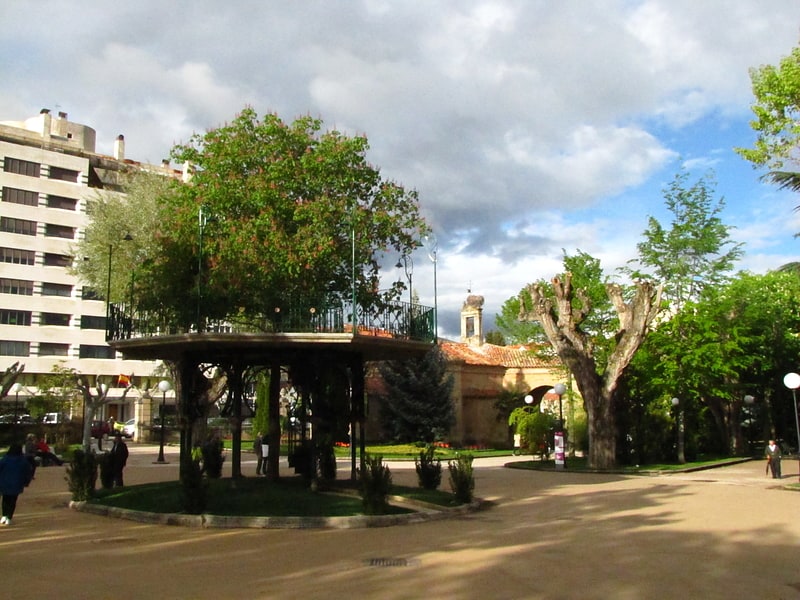
The Alameda de Cervantes, popularly known as "La Dehesa", is the garden par excellence of the city of Soria, not only for its location in the very center of the city, where hundreds and hundreds of species of vegetation coexist, but for its high cultural and landscape value. It is also one of the oldest public gardens in Spain and Europe.
It is the most important green area of the city and the real green lung of the city centre. The park is located in the city centre, opposite the Plaza de Mariano Granados and next to the Paseo del Espolón. There are those who look for the intimate walks where they can walk slowly, the immeasurable beauty of La Rosaleda, the delightful top of the park where there is a green meadow, the cafes to regain strength, crystal clear water fountains, lampposts that illuminate the quiet nights of Soria or comfortable benches that invite you to rest.
Ermita de San Saturio
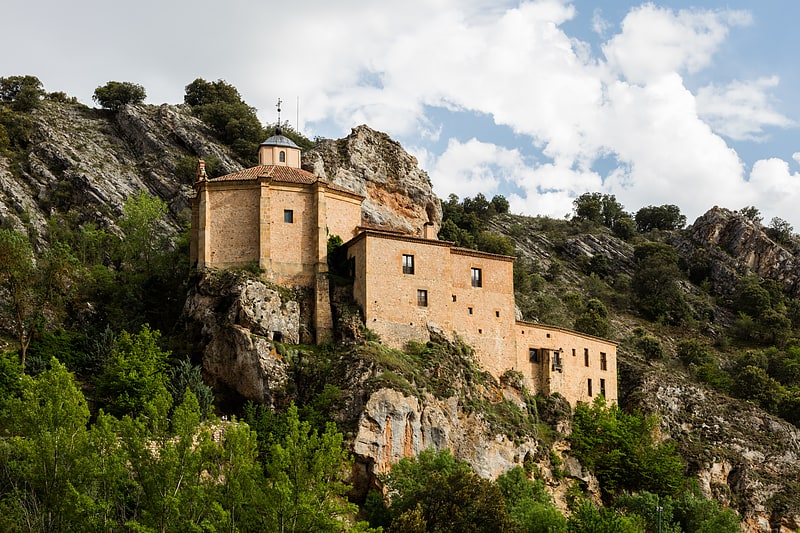
The hermitage of San Saturio is located in the Spanish city of Soria, in the homonymous province, autonomous community of Castilla y León. It is popularly considered, in its scenic enclave, one of the most beautiful places that the city has. A scale model of this building can be found in the Mudejar theme park of Olmedo. Since the construction of the hermitage, the common people of Soria, and later its Town Hall, have been responsible for the maintenance of the building, as attested by the fact that the santero, the person in charge of looking after the hermitage and its relics, and who gives the title to the novel of the same name by Juan Antonio Gaya Nuño, was a municipal employee. However, taking advantage of the law of 1998, the Church immatriculated the hermitage behind the backs of the citizens and the City Council, without to date the situation has been reversed or the Bishopric of Osma-Soria has justified this appropriation.